Overview
Embark on a soul-stirring odyssey through the heart of Morocco, a land where ancient traditions dance with modern vibrancy, and every sense is awakened. Our 14-day journey from Fes to Marrakech isn't just a tour; it's a transformative experience that will etch itself into your very being. As we traverse this magical kingdom, from the labyrinthine medinas of Fes to the sun-kissed dunes of the Sahara, and finally to the pulsating energy of Marrakech, prepare to be enveloped by a tapestry of sights, sounds, and flavors that defy imagination.
This isn't your typical vacation—it's an immersion into the soul of Morocco. You'll haggle in bustling souks, sleep under a canopy of desert stars, sip mint tea with Berber nomads, and stand in awe before architectural marvels that have withstood the test of time. Each day brings new wonders, challenging your perceptions and opening your heart to the incredible diversity of Moroccan culture.
Whether you're an intrepid solo traveler, a couple seeking romance in exotic lands, a family craving educational adventures, or a group of friends chasing unforgettable experiences, this journey caters to all. It's designed to push you gently beyond your comfort zone while ensuring you're enveloped in the warmth of Moroccan hospitality.
So, pack your sense of wonder, leave your preconceptions behind, and join us on this life-changing expedition. Morocco awaits, ready to reveal its secrets, share its stories, and leave you forever changed. Are you ready to answer the call of Morocco?
Duration: 14 days/13 nights
Itinerary: Ancient Medina of Fes, Chefchaouen, Volubilis, Merzouga, Erg Chebbi Dunes, Todra Gorge, Dades Valley, Ait Benhaddou, and Marrakech.

Price: chack bellow
Tour availability: Everyday
Highlights of the 14 days tour from Fes
Fes Medina (Fes el Bali) – A UNESCO World Heritage site, featuring the Blue Gate, Al-Quaraouiyine Mosque, vibrant souks, and traditional artisan workshops.
Volubilis – Ancient Roman ruins with stunning mosaics and the iconic Triumphal Arch.
Moulay Idriss – Picturesque holy town and pilgrimage site with sweeping views.
Meknes – Imperial city highlights: Bab Mansour, royal granaries, and authentic souks.
Ifrane – "Little Switzerland," known for its alpine charm and serene mountain setting.
Middle Atlas Cedar Forests – Home to Barbary macaques and breathtaking natural beauty.
Ziz Valley – A lush oasis with endless date palms, showcasing ingenious irrigation systems in a stark desert landscape.
Erfoud – Known as the "Gate of the Sahara," famous for its fossil workshops and ancient marine relics.
Erg Chebbi Dunes, Merzouga – Towering orange sand dunes offering camel treks, desert camps, and magical sunrises.
Todra Gorge – A dramatic canyon with 300-meter cliffs, ideal for exploration and rock climbing.
Dades Valley – The "Valley of a Thousand Kasbahs," with dramatic rock formations and traditional rose products.
Kasbah Amridil, Skoura – A well-preserved 17th-century kasbah showcasing ingenious architecture.
Ait Benhaddou – A UNESCO World Heritage ksar, famous for its earthen buildings and cinematic history.
Marrakech – Highlights include the Koutoubia Mosque, Bahia Palace, Jardin Majorelle, and the bustling Djemaa el-Fna square.
Itinerary of Fes Tour 14 Days:
Day 1-2: Discovering Fes, The Cultural Capital
Welcome to Fes, the beating heart of Moroccan culture! As you step into this ancient city, prepare for a sensory overload that'll redefine your understanding of history and tradition. The moment you enter the UNESCO-listed medina, you're transported back in time – narrow alleyways twist and turn, leading you deeper into a maze of wonder and discovery.
On your first morning, we'll dive headfirst into the Al-Qarawiyyin University and Mosque complex. Founded in 859 AD, it's the oldest existing educational institution in the world. Let that sink in as you admire the intricate tilework and feel the weight of centuries of knowledge hanging in the air.
Next, we'll navigate the dizzying souks. The air is thick with the scent of spices, leather, and freshly baked bread. Watch artisans at work – their hands moving with inherited precision, crafting everything from intricate metalwork to vibrant textiles. This isn't just shopping; it's witnessing living history.
No visit to Fes is complete without experiencing the infamous tanneries. Brace yourself for the pungent smell as you observe the ancient leather-making process from a terrace. The sight of men waist-deep in stone vats of dye, using techniques unchanged for centuries, is both fascinating and humbling.
As the day winds down, we'll retreat to a traditional riad. These oasis-like guesthouses, with their central courtyards and intricate tilework, offer a peaceful contrast to the bustling medina outside. Enjoy a home-cooked Moroccan feast, savoring the complex flavors of a tagine while reflecting on the day's adventures.
Day two brings us to the spiritual and intellectual heart of Fes. We'll visit madrasas (Koranic schools) like the 14th-century Bou Inania, marveling at the stunning stucco work and cedar wood carvings. Each corner tells a story of Morocco's rich Islamic heritage.
In the afternoon, roll up your sleeves for a hands-on cooking class. Learn the secrets of Moroccan cuisine from a local chef, mastering the art of balancing spices and slow-cooking to perfection. As you savor your creation, you'll realize that in Fes, even a meal is a journey through history and culture.
As twilight descends, climb to a rooftop terrace. Listen to the haunting call to prayer echoing across the city, watching as the last rays of sun paint the countless minarets in hues of gold. In these moments, you'll feel the true magic of Fes – a city where past and present coexist in beautiful harmony.
Day 3: Blue Dreams in Chefchaouen
Prepare to be enchanted as we journey to Chefchaouen, Morocco's famed "Blue Pearl." Nestled in the Rif Mountains, this ethereal town is a visual feast that'll have you questioning reality. As you approach, the landscape transforms – white-washed buildings adorned in every imaginable shade of blue cascade down the hillside, creating a dreamlike panorama.
Wandering through Chefchaouen's cobblestone streets feels like stepping into a living painting. The sapphire, turquoise, and indigo hues that coat walls, doors, and even staircases aren't just aesthetically pleasing – they tell a story of Jewish refugees who brought this tradition in the 1930s, symbolizing heaven and hope.
Our exploration begins in the heart of the medina. Unlike the frenetic energy of Fes, Chefchaouen's old town exudes a laid-back, almost bohemian vibe. Artisan shops display handwoven rugs and blankets in rich colors, their designs echoing the town's Berber heritage. You'll find it hard to resist the allure of locally made trinkets and the famous blue pottery – each piece a perfect memento of this azure paradise.
As midday approaches, we'll seek refuge in one of the quaint cafes dotting Plaza Uta el-Hammam. Sip on a glass of sweet mint tea and savor a traditional Moroccan breakfast of fresh bread, olive oil, and goat cheese. Watch as locals and visitors alike bask in the warm sunlight, the 15th-century Grand Mosque and kasbah providing a stunning backdrop.
For those craving adventure, we'll embark on a short hike to the Spanish Mosque. Perched on a hill overlooking the town, this unfinished mosque offers panoramic views that'll take your breath away. As the sun begins its descent, watch Chefchaouen transform – the fading light casting long shadows and turning the blue city into a mesmerizing tapestry of purples and violets.
As evening falls, immerse yourself in the local culture at a family-run restaurant. Feast on regional specialties like tajine rfissa or fresh mountain trout. The aromatic blend of spices and the warmth of Moroccan hospitality will leave an indelible mark on your senses.
Before retiring to your charming riad, take one last stroll through the quiet streets. Under the soft glow of lanterns, Chefchaouen takes on a magical quality – the blues deepening to mysterious shades, secrets seemingly hidden in every nook and cranny. Let the tranquility wash over you, for tomorrow, new adventures await.
In Chefchaouen, every moment is a brush stroke in your Moroccan masterpiece, every blue-drenched alley a pathway to serenity. This azure oasis isn't just a feast for the eyes – it's a balm for the soul, a place where time seems to slow and worries melt away like watercolors in the rain.
Day 4: Roman Ruins and Holy Cities
As dawn breaks, we bid farewell to Chefchaouen's azure dreamscape and embark on a journey through time. Today, we'll witness the fascinating intersection of ancient Roman civilization and Islamic spirituality, a testament to Morocco's rich, layered history.
Our first stop: the awe-inspiring ruins of Volubilis. As you approach this UNESCO World Heritage site, the grandeur of Rome rises from the rolling Moroccan countryside. Once a thriving outpost of the Empire, Volubilis now stands as a magnificent skeleton of its former glory. Wander among the weathered stones, tracing the outlines of long-gone shops, houses, and public baths. Marvel at the remarkably preserved mosaic floors, their intricate patterns still vibrant after two millennia. The Triumphal Arch of Caracalla looms against the sky, a poignant reminder of imperial ambition in this far-flung corner of Africa.
As you explore, let your imagination run wild. Picture toga-clad citizens strolling these very streets, conducting business in the forum, or offering sacrifices at the Capitoline Temple. Your guide will bring the ruins to life with tales of daily Roman life, political intrigues, and the eventual decline of this once-prosperous city.
From the echoes of Rome, we journey to the heartbeat of Islamic Morocco: the holy city of Moulay Idriss. Perched dramatically atop two hills, this picturesque town holds profound significance for Moroccan Muslims. It's named after Moulay Idriss I, a descendant of the Prophet Muhammad who brought Islam to Morocco and founded the country's first dynasty.
As we enter the town, you'll feel a palpable shift in atmosphere. The air buzzes with spiritual energy, and the streets pulse with the rhythms of daily devotion. We'll wind our way through narrow alleys, past pristine white-washed buildings adorned with green tiles – the color of Islam. The town's unique cylindrical minaret will guide our way to the ornate tomb of Moulay Idriss I, a site of pilgrimage for Muslims across Morocco.
While non-Muslims cannot enter the tomb itself, the town offers plenty to explore. We'll visit the enchanting Plaza Mohammed VI, where locals gather to socialize and sip mint tea. You'll have the chance to taste the town's famous nougat candy and perhaps witness the traditional sheep market if our timing is right.
As the day wanes, find a quiet spot to absorb the panoramic views of the surrounding olive groves and rolling hills. The call to prayer echoes across the valley, a haunting melody that bridges the centuries between Volubilis's pagan past and Moulay Idriss's Islamic present.
This day serves as a powerful reminder of Morocco's diverse heritage. From the grandeur of Rome to the spiritual heart of Islam, you've traversed not just physical distances, but epochs of human history. As we return to Fes for the night, reflect on the enduring legacy of these civilizations and how they've shaped the Morocco you're discovering.
Day 5: Middle Atlas Adventure to Midelt
Today, we leave the imperial cities behind and venture into the rugged beauty of the Middle Atlas Mountains. Our journey to Midelt is not just a transition between destinations; it's an immersion into Morocco's diverse landscapes and a chance to connect with its rural heart.
As we ascend into the mountains, watch the scenery transform dramatically. The urban sprawl gives way to rolling hills, then dense cedar forests that cloak the mountainsides in a verdant embrace. Keep your eyes peeled for troops of Barbary macaques, the only primate species north of the Sahara. These curious creatures often gather by the roadside, offering a delightful photo opportunity and a reminder of the unique ecosystems we're passing through.
Our first stop is Ifrane, often called the "Switzerland of Morocco." This charming town, with its alpine-style architecture and manicured gardens, feels like a European resort incongruously placed in North Africa. Stroll through its immaculate streets, breathe in the crisp mountain air, and marvel at the juxtaposition of ski lodges against the Moroccan landscape.
As we continue our ascent, we'll pause in the ancient cedar forests near Azrou. Here, towering trees that have stood for centuries create a mystical atmosphere. Walk among these giants, some over 100 feet tall, and listen to the whisper of the wind through their branches. It's a moment of tranquility that contrasts sharply with the bustling medinas we've left behind.
Our route takes us through Berber villages that cling to the mountainsides. Unlike the grand imperial cities, these communities offer a glimpse into rural Moroccan life that has changed little over generations. We'll stop for lunch in one such village, where you'll savor traditional mountain cuisine. The flavors are bold and hearty – perfect fuel for our high-altitude adventure.
As we approach Midelt, the landscape shifts again. The lush forests give way to more arid terrain, signaling our approach to the desert regions beyond. Midelt itself, nestled in a high plain between the Middle and High Atlas ranges, serves as a gateway between Morocco's northern cities and the Sahara.
Upon arrival, we'll check into our mountain lodge, a cozy retreat that blends traditional Moroccan design with modern comforts. Take time to relax and acclimatize to the altitude, perhaps with a glass of Moroccan mint tea on the terrace as you gaze at the stunning mountain vistas.
As evening falls, we have a special treat in store. We'll head to a nearby hilltop for a stargazing session. Far from city lights, the night sky here is a revelation. A local astronomer will guide us through the constellations, sharing both scientific knowledge and Berber star lore. As you gaze up at the infinite expanse of stars, you'll feel a profound connection to the land and its ancient rhythms.
This day is a reminder that Morocco's magic extends far beyond its famous cities. In the Middle Atlas, you've witnessed the country's natural grandeur, experienced its rural traditions, and perhaps felt a stirring of something timeless and profound. As you drift off to sleep in Midelt, let the day's images – from playful monkeys to ancient cedars to countless stars – dance in your dreams, for tomorrow, we draw ever closer to the legendary Sahara.
Day 6-7: Sahara Desert Experience in Merzouga
Prepare for the pinnacle of your Moroccan adventure as we journey into the mystical Sahara Desert. The drive to Merzouga is a spectacle in itself, as the landscape gradually shifts from rocky plains to the iconic orange dunes of Erg Chebbi. As the first ripples of sand appear on the horizon, feel the anticipation build – you're about to step into one of the world's most awe-inspiring natural wonders.
Upon reaching Merzouga, we'll trade our vehicle for ships of the desert – camels. As you mount these majestic creatures, led by blue-robed Tuareg guides, you'll feel transported to another era. The gentle sway of the camel's gait lulls you into a meditative state as you traverse the sea of sand. Watch in awe as the late afternoon sun paints the dunes in a palette of gold, orange, and red, the colors shifting with each passing minute.
Our destination is a luxurious desert camp nestled among the towering dunes. As you dismount and climb to the top of a nearby dune, you'll be struck by the sheer vastness of the Sahara stretching in every direction. The silence is profound, broken only by the whisper of wind over sand.
As night falls, the desert transforms. Gather around a crackling fire as our Berber hosts prepare a traditional feast. The aroma of slow-cooked tagine and freshly baked bread fills the air. After dinner, lie back on plush carpets and gaze at a sky ablaze with stars. The Milky Way stretches across the heavens in a display of celestial beauty rarely seen in our light-polluted world. Let the rhythmic beats of Gnawa music transport you as you sip sweet mint tea and ponder the timeless majesty of the desert.
Wake before dawn for a truly magical experience – watching the sunrise over the Sahara. As the first rays of light kiss the dunes, the landscape comes alive in a symphony of color and shadow. This is a moment of profound beauty that will etch itself into your memory forever.
After a hearty breakfast, the day is yours to embrace the desert's wonders. For the adventurous, sandboarding down the dunes offers an exhilarating rush. Others might prefer a more contemplative desert yoga session, finding inner peace amidst the tranquil surroundings. We'll also venture out in 4x4 vehicles to explore hidden oases and meet with nomadic families, gaining insight into their resilient way of life.
As the day heats up, retreat to the comfort of your tent for a siesta – a desert tradition that you'll come to appreciate. In the late afternoon, we'll embark on another camel trek to witness the sunset from a different vantage point. Each dune offers a new perspective on the desert's ever-changing beauty.
Your final evening in the Sahara brings a special treat – a traditional music performance under the stars. Let the hypnotic rhythms and soulful melodies of Berber and Gnawa music wash over you as you reflect on your desert odyssey.
These two days in the Sahara are more than just a highlight of your Moroccan journey – they're a transformative experience that connects you with nature's raw beauty and the ancient cultures that have called this harsh landscape home for millennia. As you drift off to sleep in your desert tent, lulled by the profound silence of the Sahara, you'll feel a deep sense of peace and wonder. The desert has a way of putting life into perspective, reminding us of our small place in the vast tapestry of the universe.
Day 8: Todra Gorge and Dades Valley Exploration
Bidding farewell to the Sahara's endless horizons, we embark on a day that showcases Morocco's dramatic geological wonders. Our journey takes us from vast open spaces to towering cliffs and winding valleys, each turn revealing a new facet of the country's diverse landscape.
Our first stop is the awe-inspiring Todra Gorge. As we approach, the flat desert terrain suddenly gives way to a series of limestone river canyons. The gorge itself is a masterpiece of nature's sculpting – sheer rock walls rise over 500 feet on either side, their reddish-orange hues creating a stark contrast against the brilliant blue sky. At its narrowest point, the canyon is only 33 feet wide, and you'll feel dwarfed by the towering cliffs as we walk along the crystal-clear river that carved this spectacular formation over millennia.
For the adventurous souls among us, Todra Gorge offers world-class rock climbing opportunities. Whether you're a seasoned climber or a curious novice, there's a chance to scale these ancient walls under the guidance of experienced local instructors. Feel the rough limestone under your fingers, the sun on your back, and the thrill of ascending one of nature's most impressive monuments.
Those preferring to keep their feet on the ground can explore the lush palmeries at the gorge's entrance. These verdant oases, fed by the same river that shaped the canyon, offer a refreshing counterpoint to the stark beauty of the rocks. Wander through gardens of date palms, fruit trees, and vegetable plots, learning about the ingenious irrigation systems that have sustained life here for centuries.
As midday approaches, we'll seek out a local Berber family who will welcome us into their home for lunch. Savor traditional dishes made with locally-sourced ingredients while gaining insight into daily life in this rugged region. The warmth of Moroccan hospitality shines especially bright in these remote areas, where guests are treated like long-lost friends.
In the afternoon, we journey into the equally spectacular Dades Valley, often referred to as the "Valley of a Thousand Kasbahs." The landscape here is a photographer's dream – a winding river has carved a lush green oasis through a desert of red rock, dotted with ancient fortified villages and crumbling kasbahs.
We'll stop at strategic viewpoints to capture the valley's beauty, including the famous hairpin turns of the Dades Gorge road. These switchbacks, etched into the mountainside, offer heart-stopping views and serve as a testament to human engineering in harmony with nature's grand design.
As the day wanes, we'll check into our accommodation for the night – a restored kasbah perched on the edge of the valley. These fortified houses, once home to powerful local families, now offer travelers a chance to step back in time while enjoying modern comforts.
Before dinner, we have a special treat in store – a sunset photography workshop. Whether you're wielding a professional DSLR or simply using your smartphone, our local photography expert will help you capture the magic of the "golden hour" as the setting sun paints the valley in warm hues. Learn techniques to frame the landscape, play with light and shadow, and truly do justice to the breathtaking scenery before you.
As night falls, gather on the kasbah's rooftop terrace. Enjoy a dinner of local specialties as you gaze out over the valley, now bathed in moonlight. The silhouettes of distant kasbahs and the gentle murmur of the river below create a mystical atmosphere, inviting reflection on the day's adventures.
This day in the gorges and valleys of southern Morocco offers a perfect blend of natural wonders, cultural encounters, and active exploration. From the towering cliffs of Todra to the winding beauty of the Dades, you've witnessed some of the country's most spectacular landscapes. As you drift off to sleep in your kasbah room, let the day's images – soaring rock faces, lush palmeries, winding roads, and warm Berber smiles – mingle in your dreams, a kaleidoscope of Moroccan memories that will stay with you long after your journey ends.
Day 9-10: Ouarzazate and Ait Benhaddou: Hollywood of Africa
Welcome to the realm where fantasy meets reality, where ancient mud-brick citadels double as blockbuster movie sets. Ouarzazate and nearby Ait Benhaddou offer a fascinating blend of authentic Moroccan heritage and silver screen magic that will captivate your imagination.
Our first stop is the legendary Ait Benhaddou, a UNESCO World Heritage site that seems to have sprung straight from the pages of "One Thousand and One Nights." This ksar, or fortified village, is a stunning example of southern Moroccan architecture. As you approach, the cluster of earthen buildings rises dramatically against the backdrop of the Atlas Mountains, its warm ochre tones shifting with the changing light.
Crossing the shallow river (or using the modern bridge if the water's high), you'll enter a world frozen in time. Wander through the narrow, winding streets, marveling at the intricate decorations on doorways and windows. Climb to the top of the hill for panoramic views that have graced countless films and TV shows, from "Gladiator" to "Game of Thrones." Here, your guide will regale you with tales of the site's history, from its days as a crucial stop on trans-Saharan trade routes to its modern incarnation as a cinematic icon.
We'll lunch with a local family within the ksar, savoring traditional Berber cuisine while gaining insight into life in this living museum. You might even try your hand at traditional mud-brick building techniques – a hands-on way to connect with centuries of architectural heritage.
In the afternoon, we head to Ouarzazate, dubbed the "Hollywood of Africa" for its booming film industry. Our first stop is Atlas Film Studios, one of the world's largest. Here, you'll step into a surreal landscape of half-built film sets and discarded props. Wander through ancient Egyptian temples that stand next to medieval European villages, all crafted with painstaking detail. Your guide, possibly a film industry veteran, will share behind-the-scenes stories of famous productions, offering a glimpse into the movie magic that has put Morocco on the cinematic map.
As evening falls, we'll retire to our hotel, a converted kasbah that blends traditional Moroccan architecture with modern luxury. Relax by the pool, perhaps with a good book – maybe one that's been adapted into a film shot in the very landscapes you've explored today.
Day 10 begins with a visit to the Taourirt Kasbah in Ouarzazate. This sprawling 19th-century citadel, once home to the powerful el Glaoui family, is a maze of painted ceilings, hidden staircases, and panoramic terraces. As you explore its nooks and crannies, you'll gain insight into the lives of Morocco's pre-colonial elite and the architectural ingenuity that allowed life to flourish in this harsh climate.
In the afternoon, we offer a choice of activities. Film enthusiasts might opt for a workshop on traditional Berber clothing and its use in historical dramas. Here, you can try on elaborate costumes and learn about the meticulous work that goes into creating authentic period pieces for the silver screen.
For those more interested in local crafts, we'll visit a women's carpet cooperative. Watch as skilled artisans work their looms, creating intricate designs passed down through generations. You'll learn about natural dyeing techniques and the symbolism behind different patterns, gaining a deeper appreciation for these functional works of art.
As the day winds down, we'll gather for a sunset camel ride along the shores of the El Mansour Eddahbi lake. The tranquil waters reflect the changing colors of the sky, creating a moment of serene beauty that contrasts with the bustling film sets and ancient kasbahs we've explored.
Our farewell dinner in Ouarzazate is a celebration of Moroccan cinema and cuisine. In a restaurant adorned with movie memorabilia, we'll feast on a menu that blends traditional flavors with a touch of Hollywood glamour. As you dine, reflect on these two days where you've walked in the footsteps of both ancient traders and modern movie stars, experiencing the unique magic that has drawn storytellers to this corner of Morocco for centuries.
Ouarzazate and Ait Benhaddou offer a unique convergence of history, culture, and modern creativity. Here, amidst the sun-baked landscapes and timeless architecture, you've witnessed how Morocco's rich heritage continues to inspire and captivate the world. As you prepare for the final leg of your journey, carry with you the sense of wonder and possibility that permeates this land where dreams – both ancient and celluloid – come to life.
Day 11: Crossing the High Atlas to Marrakech
Brace yourself for a day of breathtaking vistas and dramatic landscapes as we embark on one of Morocco's most spectacular road trips – crossing the High Atlas Mountains en route to the fabled city of Marrakech. This journey isn't just about reaching our destination; it's an adventure in itself, offering a front-row seat to the raw beauty of North Africa's highest mountain range.
As we leave Ouarzazate behind, watch the landscape transform. The arid plains gradually give way to rugged foothills, then to towering peaks that scratch the sky. Our ascent takes us along the Tizi n'Tichka pass, a marvel of engineering that snakes its way through the mountains, reaching an altitude of over 7,400 feet.
The drive is a visual feast, with each hairpin turn revealing new wonders. Verdant valleys dotted with Berber villages cling to steep slopes, their terraced fields a testament to human ingenuity in the face of nature's challenges. Snow-capped peaks loom in the distance, their white crowns a striking contrast to the rust-red rocks below.
We'll make frequent stops at strategic viewpoints, allowing you to stretch your legs and capture the awe-inspiring scenery. One moment you're gazing down into deep gorges carved by ancient rivers; the next, you're looking up at jagged peaks that seem to touch the clouds. The play of light and shadow across the mountainsides creates an ever-changing tableau, a photographer's dream come true.
Midway through our journey, we'll pause at a traditional Berber village for lunch. Here, high in the mountains, you'll experience hospitality that has remained unchanged for centuries. Savor a home-cooked meal of hearty mountain fare – perhaps a steaming tagine of lamb with prunes, or a warming harira soup – as you chat with your hosts about life in this remote region.
After lunch, take a short walk through the village. Marvel at the ingenuity of Berber architecture, with houses built from local materials to withstand the harsh mountain climate. You might spot women weaving colorful rugs or men tending to their goat herds – timeless scenes that offer insight into a way of life intimately connected to the rhythms of the mountains.
As we continue our descent towards Marrakech, the landscape gradually softens. The stark mountain terrain gives way to rolling foothills cloaked in argan forests. If we're lucky, we might spot goats perched in the gnarly branches of these trees, a quirky sight that's unique to this part of Morocco.
The final stretch of our journey brings a palpable sense of anticipation. The plains of Marrakech stretch out before us, a sea of green punctuated by the occasional oasis. In the distance, the minarets of Morocco's Red City rise from the desert haze, beckoning us towards new adventures.
As we approach Marrakech, feel the energy shift. The tranquility of the mountains gives way to the vibrant buzz of city life. Palm-lined avenues and ochre-colored ramparts welcome us to a city that has captivated travelers for centuries.
We'll arrive in Marrakech as the sun begins to set, casting a golden glow over the city. After checking into our riad in the medina, take a moment to catch your breath and reflect on the day's journey. From the soaring peaks of the Atlas to the exotic allure of Marrakech, you've traversed not just physical distance, but centuries of history and culture.
To cap off this extraordinary day, we'll head to a rooftop terrace for a welcome dinner. As you savor your first taste of Marrakchi cuisine, gaze out over the city's skyline. The distant call to prayer mingles with the hum of the medina below, a sensory symphony that hints at the wonders awaiting you in the coming days.
This crossing of the High Atlas is more than just a transfer between destinations. It's a journey through the heart of Morocco, a day that encapsulates the country's diverse beauty and rich cultural tapestry. As you drift off to sleep in your riad, let the memories of majestic mountains, timeless villages, and your first glimpses of Marrakech mingle in your dreams, setting the stage for the final act of your Moroccan odyssey.
Day 12-13: Marrakech: The Red City's Wonders
Welcome to Marrakech, the pulsating heart of Morocco where ancient traditions and modern vibrancy collide in a riot of color, sound, and scent. These two days will immerse you in the intoxicating chaos and beauty of this legendary city, leaving you spellbound and craving more.
Our exploration begins in the iconic Djemaa el-Fna, the grand square that serves as the city's beating heart. By day, it's a cacophony of sights and sounds – snake charmers weave their hypnotic melodies, storytellers spin ancient tales, and vendors hawk everything from fresh orange juice to traditional medicines. As night falls, the square transforms into a vast open-air dining room, filled with food stalls emitting tantalizing aromas. Dive into this sensory whirlwind, sampling local delicacies and soaking in the electric atmosphere that has captivated travelers for centuries.
Venturing deeper into the medina, we'll navigate a labyrinth of narrow alleys, each one a treasure trove of artisanal wonders. The souks of Marrakech are legendary, and for good reason. Watch master craftsmen at work – hammering intricate designs into brass trays, weaving vibrant carpets, or tooling delicate leather goods. The art of bargaining is a cultural experience in itself, so don't be shy about haggling for that perfect souvenir.
No visit to Marrakech is complete without exploring its architectural marvels. The 12th-century Koutoubia Mosque, with its soaring minaret, serves as the city's most recognizable landmark. While non-Muslims can't enter, the surrounding gardens offer a serene escape from the bustling medina. We'll also visit the opulent Bahia Palace, a masterpiece of Moroccan architecture with its intricate tilework, painted ceilings, and tranquil courtyards.
For a glimpse into Marrakech's intellectual heritage, we'll explore the Ben Youssef Madrasa, once North Africa's largest Islamic college. Marvel at the stunning geometric patterns and Arabic calligraphy that adorn every surface, a testament to the heights of Islamic art and scholarship.
As the afternoon heat builds, retreat to the cool oasis of Jardin Majorelle. This botanical garden, once owned by Yves Saint Laurent, is a modernist dream in vivid cobalt blue. Stroll along shaded pathways, admire exotic plants from around the world, and visit the on-site Berber Museum for insight into Morocco's indigenous culture.
For those seeking a more hands-on experience, we offer an optional cooking class. Learn the secrets of Moroccan cuisine, from selecting spices in the market to preparing a perfect tagine. It's a delicious way to take a piece of Morocco home with you.
As evening approaches on our final night, we have a special treat in store. Ascend to a rooftop terrace overlooking the medina for a sunset cocktail. Watch as the city is bathed in golden light, the call to prayer echoing across the rooftops in a hauntingly beautiful chorus.
Our farewell dinner is a feast for all senses at a restored riad. Dine on gourmet Moroccan cuisine in a courtyard filled with the gentle splash of fountains and the soft strumming of oud music. It's a magical setting to reflect on your journey and the myriad experiences that have shaped your understanding of Morocco.
For those with energy to spare, the night doesn't have to end there. Marrakech's modern side beckons in Gueliz, where chic bars and clubs offer a stark contrast to the traditional medina. Or perhaps you'd prefer a more traditional nightcap – a final glass of mint tea in a quiet corner of Djemaa el-Fna, watching as the square slowly winds down for the night.
These two days in Marrakech serve as a fitting finale to your Moroccan odyssey. In this city where past and present, tradition and innovation, tranquility and excitement coexist in vibrant harmony, you'll find a microcosm of all that makes Morocco magical. As you wander through its rose-hued streets, haggle in its colorful souks, and bask in its legendary hospitality, you'll understand why Marrakech has held travelers in its thrall for a thousand years – and why it will undoubtedly call you back again.
Day 14: Farewell to Morocco
As the sun rises on your final day in Morocco, take a moment to savor the sounds of the city awakening. The distant call to prayer, the clatter of donkey carts on cobblestone streets, the aroma of fresh bread wafting from nearby bakeries – these sensory memories will stay with you long after you've returned home.
For early risers, we offer one last adventure – a sunrise hot air balloon ride over the outskirts of Marrakech. Float silently above a patchwork of palm groves, small villages, and desert terrain, watching as the first rays of sunlight paint the landscape in warm hues. The Atlas Mountains loom on the horizon, a majestic backdrop to this bird's-eye view of Morocco's diverse beauty. As you gently descend back to earth, raise a toast with a traditional Berber breakfast in the middle of an oasis, a final taste of Moroccan hospitality.
If you prefer a more grounded farewell, join us for a leisurely morning walk through the Palmeraie, Marrakech's vast palm grove. This green oasis on the city's outskirts offers a peaceful contrast to the medina's bustle. Stroll along shaded paths, breathe in the fresh morning air, and reflect on the journey that's coming to an end.
For those seeking last-minute souvenirs or a final shopping spree, we'll arrange a guided tour of Marrakech's best boutiques and concept stores. From traditional crafts to cutting-edge Moroccan design, you'll find unique pieces to keep your memories of Morocco alive.
As checkout time approaches, gather in the riad's courtyard for a farewell brunch. Savor classic Moroccan breakfast dishes like khlea (preserved meat) with eggs, or indulge in flaky pastries drizzled with honey. It's a chance to exchange contact information with new friends and share favorite moments from the trip.
Before departing for the airport, take one last stroll through the medina. Let your senses drink in the sights, sounds, and scents that have become familiar over the past two weeks. Perhaps buy a final glass of freshly squeezed orange juice from a vendor in Djemaa el-Fna, or pause for a moment of reflection in the peaceful Koutoubia gardens.
As you head to the airport, your mind will likely be swirling with images and experiences from your Moroccan odyssey. The labyrinthine medinas of Fes and Marrakech, the ethereal blue streets of Chefchaouen, the mighty sand dunes of the Sahara, the rugged beauty of the Atlas Mountains – each memory a vivid brushstroke in the masterpiece of your journey.
But beyond the spectacular landscapes and historic sites, it's the people you've met along the way who will likely leave the most lasting impression. The warmth of Moroccan hospitality, the pride in ancient traditions, the genuine connections forged over cups of mint tea – these human touches have transformed your trip from a mere sightseeing tour to a profound cultural exchange.
As your plane lifts off, stealing one last glimpse of Morocco's diverse terrain, allow yourself to feel the bittersweet pang of departure. You're leaving with far more than photos and souvenirs – you're carrying with you a piece of Morocco's soul, a newfound appreciation for its culture, and memories that will last a lifetime.
This journey from Fes to Marrakech has been more than a vacation; it's been a transformative experience that has challenged your perceptions, expanded your horizons, and perhaps even changed the way you see the world. As you settle into your seat, already planning your return visit in your mind, remember the Moroccan saying: "Inshallah" – God willing. For in Morocco, you've learned that sometimes the most magical experiences are those you don't plan, but rather open your heart to receive.
Inclusive and Exclusive of the tour:
Inclusive:
Pick up from your accommodation in Fes.
A/C modern 4x4 SUV, van, or minibus.
English-speaking driver or a driver and an English-speaking tour guide.
Accommodation for 13 nights in carefully selected hotels or riads.
Meals: Breakfast and dinner throughout the tour (specific details provided in the itinerary).
Scenic stops in Ifrane and the cedar forests.
Visit to Barbary macaques' habitat in the Middle Atlas.
Exploration of diverse landscapes, including the Middle Atlas Mountains, valleys, and desert.
Camel trek and overnight stay in a desert camp.
Guided tours in historical and cultural sites as specified.
Exclusive:
Lunches during the tour (available at local restaurants en route).
Drinks.
Entrance fees to monuments and attractions (when applicable).
Tips for the driver/guide (optional).
Personal expenses and souvenirs.
Travel insurance.
14 Days Fes Tour Price
The price of our 14 Days Fes Tour is flexible, varying based on factors such as accommodation choices, group size, and travel season. For a personalized quote tailored to your needs, please contact us. Our dedicated team will help craft an itinerary that aligns with your budget and preferences.
Map of the tour:
SEE AS WELL
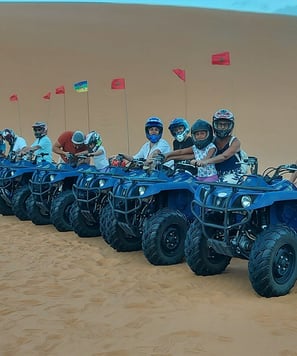

Fes to Marrakech Desert tour 2 days
Experience the best of Fes with our popular tours. From the vibrant markets of Fes to day trips to Chefchaouen, Meknes, and the desert.
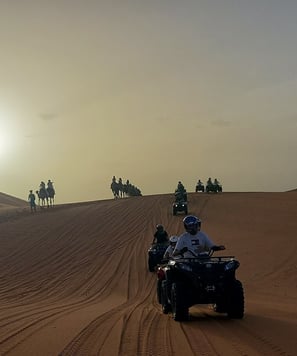

3 days desert tour from Fes to Marrakech
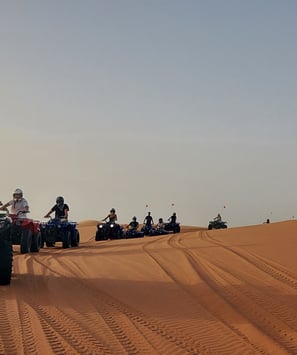

Fes to Marrakech Desert tour 4 days
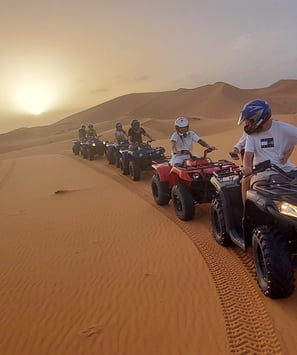

5 days desert tour from fes to marrakech
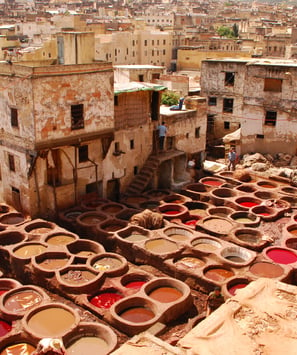

6 Days Morocco Tour From Fes
7 Days Morocco Tour From Fes
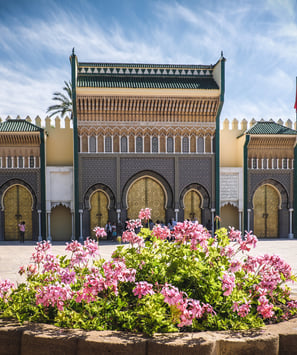

8 Days Morocco Tour From Fes
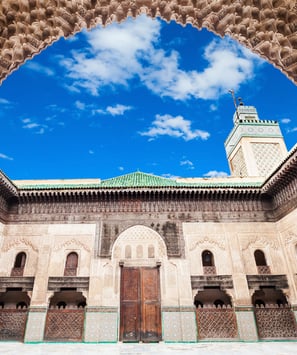

9 Days Morocco Tour From Fes
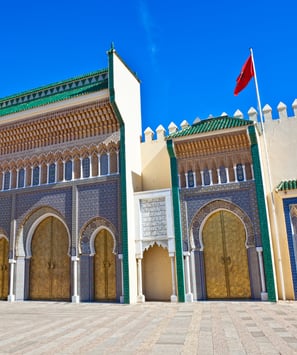

10 Days Morocco Tour From Fes
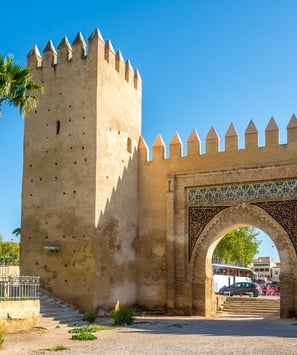

11 Days Morocco Tour From Fes
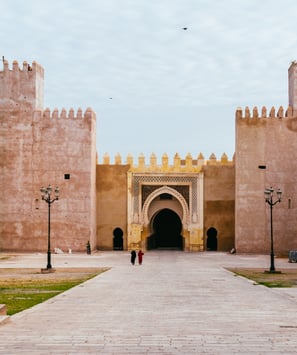

12 Days Tour From Fes
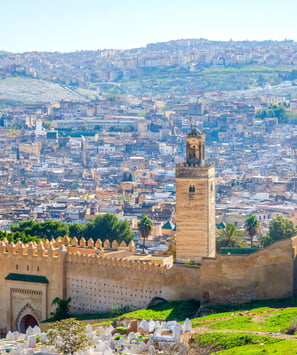

12 Days Tour From Fes
13 Days Tour From Fes to Marrakech
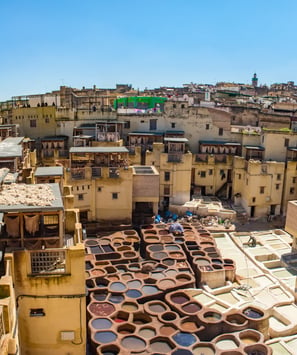

14 Days Tour From Fes to Marrakech
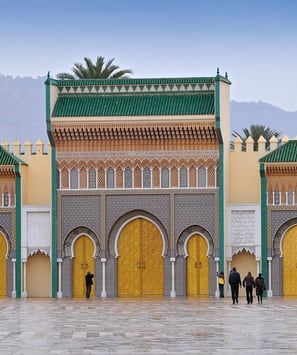

15 Days Tour From Fes to Marrakech
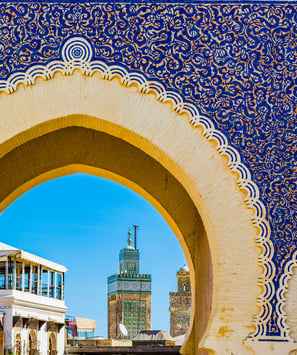

Know Before You Go:
Practical Tips for Your 14-Day Moroccan Adventure
Embarking on a 14-day journey through Morocco is an exhilarating prospect, but proper preparation can elevate your experience from memorable to truly extraordinary. Here are some insider tips to help you navigate this diverse country with ease and cultural sensitivity.
First and foremost, respect local customs and dress codes. Morocco is a predominantly Muslim country, and modest dress is appreciated, especially in more conservative areas. Women should cover their shoulders and knees, while men should avoid shorts in religious sites. Pack a light scarf – it's versatile for both sun protection and impromptu mosque visits.
Language can be a bridge or a barrier. While Arabic and Berber are official languages, French is widely spoken in urban areas. Learning a few basic phrases in Arabic or Berber can go a long way in forging connections with locals. "Shukran" (thank you) and "La shukran" (no thank you) are particularly useful.
Haggling is an integral part of Moroccan culture, especially in souks. Approach it as a friendly negotiation rather than a confrontation. Start at about half the asking price and work your way up. Remember, it's okay to walk away if you can't reach a mutually satisfactory price.
Stay hydrated, but be mindful of water sources. Stick to bottled water and avoid ice in drinks. When it comes to street food, follow the locals – busy stalls with high turnover are usually safe bets. Don't miss out on fresh orange juice, a Moroccan specialty, but ensure it's prepared hygienically.
Morocco's diverse landscape means you'll encounter various climates. Pack layers – nights in the desert and mountains can be surprisingly chilly, even when days are scorching. Comfortable, sturdy shoes are essential for navigating uneven medina streets and mountain trails alike.
Time moves at a different pace in Morocco. Embrace "Moroccan time" – things may not always run according to schedule, and that's part of the charm. Build some flexibility into your itinerary and allow time for spontaneous discoveries.
While Morocco is generally safe for travelers, exercise common-sense precautions. Be aware of your surroundings, especially in crowded areas, and keep valuables secure. Solo female travelers might experience unwanted attention; a firm "La shukran" usually suffices to deter persistent touts.
Tipping is customary in Morocco. In restaurants, 10% is standard if a service charge isn't included. For guides and drivers, 100-200 dirhams per day is appreciated. Small change is useful for tipping bathroom attendants and bag handlers.
Finally, open your heart to the renowned Moroccan hospitality. If invited for tea, accept if you can – it's a cherished tradition and a wonderful way to experience local culture firsthand. Remember, a smile and a respectful attitude will open many doors on your Moroccan adventure.
By keeping these tips in mind, you'll be well-prepared to immerse yourself fully in the magic of Morocco, navigating its complexities with confidence and cultural awareness. Your 14-day journey is set to be an unforgettable tapestry of experiences, woven with the threads of ancient traditions and warm hospitality.
What to Pack for Your Moroccan Journey
Packing for a 14-day adventure through Morocco's diverse landscapes and vibrant cities requires careful consideration. Your suitcase should be a well-curated collection of versatile items that respect local customs while keeping you comfortable in varying climates.
Start with clothing that adheres to Morocco's conservative dress code. For women, pack loose-fitting, breathable pants or long skirts, along with shirts that cover the shoulders and chest. Men should opt for lightweight trousers and collared shirts. Include at least one nicer outfit for evenings out in Marrakech or dining in upscale riads.
Layering is key to adapting to Morocco's temperature fluctuations. A light jacket or sweater is essential for cool desert nights and chilly mountain air. Don't forget a wide-brimmed hat and sunglasses to shield yourself from the intense Moroccan sun.
Footwear is crucial – pack a pair of sturdy, comfortable walking shoes for exploring medinas and archaeological sites. Sandals are great for warmer days, but ensure they're supportive enough for extended wear. If your itinerary includes a hammam visit, bring flip-flops.
A daypack is indispensable for carrying essentials during excursions. Include a reusable water bottle to stay hydrated, and a portable power bank to keep your devices charged for those Instagram-worthy moments.
For the desert portion of your journey, pack a small flashlight or headlamp for navigating camp at night. A light sleeping bag or sleep sheet can provide extra comfort in desert camps or basic accommodations.
Don't underestimate the importance of a good quality camera to capture the stunning vistas and intricate details of Moroccan architecture. If you're bringing a smartphone, consider a waterproof case for added protection against sand and unexpected splashes.
Toiletries should include high SPF sunscreen, insect repellent, and hand sanitizer. Women might want to pack a supply of feminine hygiene products, as options may be limited in rural areas. A small first-aid kit with basic medications is always a wise addition.
To respect local customs when visiting religious sites, women should pack a scarf large enough to cover their hair. This versatile item can also serve as a shoulder cover or impromptu picnic blanket.
Consider bringing some small gifts from your home country to share with hosts or new friends you meet along the way. It's a thoughtful gesture that can lead to meaningful cultural exchanges.
Lastly, leave some space in your luggage for souvenirs. Morocco's vibrant markets offer a treasure trove of unique items, from intricate carpets to aromatic spices, that you'll want to bring home.
Remember, while it's important to be prepared, try not to overpack. Many items can be purchased locally if needed, and traveling light allows for easier navigation of Morocco's bustling medinas and winding mountain roads. With these essentials in your suitcase, you'll be well-equipped to embrace every aspect of your Moroccan adventure, from the souks of Fes to the sands of the Sahara.
Cultural Etiquette and Customs
Navigating Morocco's rich cultural landscape requires a delicate balance of respect, awareness, and open-mindedness. Understanding and adhering to local customs will not only enrich your experience but also foster meaningful connections with the warm-hearted Moroccan people.
First and foremost, embrace the concept of "Moroccan time." Life moves at a different pace here, and punctuality isn't always prioritized. Adopt a flexible attitude and view delays as opportunities for unexpected discoveries rather than inconveniences.
Greetings are an essential part of Moroccan social interactions. A handshake is common, but be aware that some conservative Muslims may avoid physical contact with the opposite sex. In such cases, a smile and a hand over your heart is a respectful alternative. Learning a few Arabic greetings like "As-salaam-alaikum" (peace be upon you) will be greatly appreciated.
Dress modestly to show respect for local customs, especially when visiting religious sites or rural areas. Women should cover their shoulders and knees, while men should avoid shorts. In more conservative regions, women might consider wearing a headscarf.
When entering a Moroccan home or mosque, always remove your shoes. It's customary to bring a small gift, such as pastries or fruit, when invited to someone's home. Accept offers of mint tea – it's not just a beverage, but a symbol of hospitality and friendship.
Eating with your right hand is customary in Morocco, as the left hand is considered unclean. When sharing a communal dish, eat only from the portion directly in front of you. Declining food can be seen as impolite, so accept at least a small amount if offered.
Public displays of affection are frowned upon in Morocco. Couples should refrain from kissing or extensive touching in public spaces. However, it's common to see friends of the same gender holding hands or kissing cheeks in greeting.
Ramadan, the Islamic month of fasting, significantly impacts daily life in Morocco. If you're visiting during this time, be respectful by refraining from eating, drinking, or smoking in public during daylight hours.
Photography etiquette is crucial. Always ask permission before photographing people, especially in rural areas or markets. Some may request a small fee, while others may decline – respect their wishes either way.
When visiting mosques, be aware that many are closed to non-Muslims. Those that are open often have specific visiting hours and dress codes. Show reverence by speaking softly and avoiding disruptive behavior.
Bargaining is an integral part of Moroccan culture, especially in souks. Approach it as a friendly exchange rather than a battle. Start at about half the asking price and negotiate with a smile. Walking away if you can't agree on a price is perfectly acceptable.
Lastly, practice patience and maintain a sense of humor. Misunderstandings can happen, but approaching them with grace and a willingness to learn will often lead to memorable cultural exchanges.
By embracing these customs and approaching your interactions with respect and curiosity, you'll find Moroccans to be incredibly hospitable and eager to share their culture. Your efforts to understand and honor local traditions will undoubtedly enhance your journey, transforming it from a mere sightseeing trip into a profound cultural immersion.
Moroccan Cuisine: What to Eat and Drink
Embark on a culinary odyssey through Morocco, where every meal is a celebration of flavors, aromas, and centuries-old traditions. Moroccan cuisine, a tantalizing fusion of Berber, Arabic, Andalusian, and Mediterranean influences, offers a feast for the senses that's as diverse as the country's landscapes.
Start your gastronomic adventure with Morocco's iconic dish: tagine. Named after the cone-shaped earthenware pot it's cooked in, tagine is a slow-cooked stew that comes in countless variations. Savor the delicate balance of sweet and savory in a chicken tagine with preserved lemons and olives, or indulge in the rich flavors of a lamb tagine with prunes and almonds. Vegetarians can delight in a seven-vegetable tagine, a colorful medley of seasonal produce infused with aromatic spices.
No Moroccan meal is complete without couscous, traditionally served on Fridays but available throughout the week for tourists. This fluffy semolina pasta is typically served with tender vegetables and meat, all flavored with a fragrant broth. Don't be shy – eating couscous with your right hand is part of the authentic experience.
For a quick street food fix, try a steaming hot bowl of harira, a hearty tomato-based soup with lentils, chickpeas, and tender meat. It's especially popular during Ramadan but enjoyed year-round. Pair it with a side of chebekia, a honey-soaked sesame cookie, for a perfect blend of savory and sweet.
Seafood enthusiasts should make a beeline for the coastal towns. In Essaouira, feast on freshly grilled sardines or a hearty fish tagine. For the adventurous, try oysters from Oualidia, known for their distinctive flavor.
Meat lovers, don't miss the chance to sample mechoui, a whole lamb slow-roasted until the meat is fall-off-the-bone tender. It's often reserved for special occasions, but some restaurants in Marrakech offer it year-round.
Vegetarians need not worry – Morocco offers a bounty of plant-based delights. Zaalouk, a smoky eggplant dip, and taktouka, a zesty tomato and pepper salad, are flavorful starters. For a heartier option, try bissara, a warming fava bean soup drizzled with olive oil.
No culinary journey through Morocco is complete without indulging in its sweet treats. Sink your teeth into a sticky-sweet piece of baklava, or try chebakia, pretzel-shaped cookies deep-fried and soaked in honey. For a refreshing dessert, opt for sliced oranges sprinkled with cinnamon, a simple yet delightful end to any meal.
When it comes to beverages, mint tea reigns supreme. This sweet, fragrant concoction is more than just a drink – it's a symbol of Moroccan hospitality. Watching your host prepare and pour the tea is a ritual in itself, often accompanied by lively conversation.
For a morning pick-me-up, try nous nous, literally "half-half" in Arabic, referring to half coffee and half milk. It's Morocco's answer to a latte and a favorite among locals.
While Morocco is a predominantly Muslim country, you can find alcohol in larger cities and tourist areas. Sample local wines, particularly those from the Meknes region, known for its vineyards.
Remember to stay hydrated with bottled water and fresh orange juice, squeezed before your eyes at street stalls across the country. Just ensure the stall looks clean and has a high turnover.
As you journey through Morocco, let your taste buds guide you. Each region offers its own specialties, from Fes's famous pastilla (a sweet and savory meat pie) to Marrakech's tangia (slow-cooked lamb). Don't be afraid to try new dishes – some of your most memorable experiences might come from stepping out of your culinary comfort zone. After all, in Morocco, every meal is an adventure, every flavor a story waiting to be savored.
Shopping in Morocco: Souvenirs and Haggling
Prepare to immerse yourself in a shopping experience like no other as you navigate the vibrant souks of Morocco. These labyrinthine marketplaces are a sensory overload, where the art of commerce has been perfected over centuries. From intricate handicrafts to aromatic spices, every purchase tells a story and offers a piece of Moroccan culture to take home.
The heart of Moroccan shopping lies in its traditional crafts. Handwoven Berber carpets, each a unique masterpiece, showcase geometric patterns passed down through generations. In Fes, watch artisans hand-paint delicate ceramics, their intricate designs a testament to Moroccan artistry. For a truly special keepsake, consider a piece of leather goods from the famous tanneries – the scent alone will transport you back to Morocco long after your journey ends.
Metalwork is another Moroccan specialty. Ornate lamps cast mesmerizing patterns when lit, while intricately engraved teapots serve as both functional items and works of art. In Essaouira, seek out items crafted from thuya wood, known for its distinctive aroma and beautiful grain.
For a taste of Morocco to bring home, visit a spice shop. The pyramids of colorful spices are a photo opportunity in themselves. Consider purchasing some ras el hanout, a complex spice blend unique to each shop, or some saffron from the Taliouine region. Argan oil, whether for culinary or cosmetic use, makes for a luxurious and uniquely Moroccan gift.
Textiles are another highlight. Soft, handwoven blankets from the Atlas Mountains, vibrant silk scarves, and intricate embroideries all showcase Morocco's rich textile traditions. In Chefchaouen, look for items in the town's signature blue hue.
Now, let's discuss the art of haggling – an integral part of the Moroccan shopping experience. Approach it not as a battle, but as a dance. Start by expressing interest in an item without seeming too eager. When the seller quotes a price, offer about 40% of that amount. This might seem low, but it's a starting point for negotiation.
The key to successful haggling is to remain friendly and respectful. Smile, engage in small talk, and don't rush the process. It's perfectly acceptable to walk away if you can't agree on a price – often, this will prompt the seller to call you back with a better offer.
Remember, haggling is expected for most items, but there are exceptions. Fixed-price shops, usually in newer parts of cities, operate more like Western stores. For small purchases like bottled water or bread, haggling isn't customary.
Be aware of common tactics. A seller might claim an item is "berber antique" or made of pure silver. While there are genuine antiques and silver items available, many "antiqued" products are actually new. If authenticity is important to you, consider shopping with a reputable guide.
Don't feel pressured to buy something just because a seller has spent time with you. It's okay to browse and walk away. Conversely, if you find something you love at a fair price, don't haggle unnecessarily – supporting local artisans is part of responsible tourism.
Lastly, be mindful of luggage restrictions when shopping. Many larger items, like carpets, can be shipped home, but factor in these costs when budgeting for your purchases.
Shopping in Morocco is more than just acquiring souvenirs – it's about engaging with local culture, supporting traditional crafts, and bringing home tangible memories of your journey. Each item you purchase carries with it a story, a piece of the rich tapestry that is Morocco. So dive into the souks, engage with the sellers, and let the spirit of Moroccan commerce become part of your adventure.
Photography Tips for Capturing Morocco's Beauty
Morocco is a photographer's paradise, a land where every corner offers a potential masterpiece. From the intricate tilework of ancient mosques to the sweeping dunes of the Sahara, the country presents an endless array of visual delights. To truly capture the essence of Morocco, you'll need more than just a good eye – you'll need to understand the interplay of light, culture, and landscape that makes this country so unique.
First and foremost, embrace the golden hours. The soft, warm light of early morning and late afternoon can transform even the most ordinary scenes into magical vistas. In Chefchaouen, watch as the first rays of sun bring the blue-washed walls to life, creating a symphony of shadows and light. In the Sahara, the low sun accentuates the ripples and curves of the dunes, turning the desert into a sea of gold.
When photographing Morocco's bustling medinas, patience is key. The narrow alleys and crowded souks can be overwhelming, but take your time to find pockets of calm amidst the chaos. Look for shafts of light piercing through the covered markets, illuminating swirling dust and creating dramatic contrasts. Don't be afraid to increase your ISO in these low-light situations – a bit of grain can add to the atmospheric quality of your images.
For portraits, always ask permission before photographing people. Many Moroccans are open to being photographed, especially if you take the time to engage with them first. Learn a few phrases in Arabic or Berber to break the ice. When photographing craftsmen or vendors, consider purchasing something small as a gesture of goodwill. Remember, these interactions are about cultural exchange, not just getting the perfect shot.
Morocco's architecture offers endless compositional possibilities. In Fes and Marrakech, look for symmetry in the intricate mosaics and carved doorways. Use leading lines – like the rows of columns in the Hassan II Mosque in Casablanca – to draw the viewer's eye through the frame. Don't forget to look up – the ornate ceilings of riads and mosques often tell their own stories.
When capturing landscapes, consider using a polarizing filter to enhance the vibrant blues of the sky and reduce glare, especially in coastal areas like Essaouira. In the Atlas Mountains, a graduated neutral density filter can help balance the exposure between bright skies and shadowed valleys.
For those venturing into the Sahara, protect your gear from sand with a good quality camera bag or rain cover. The ever-changing dunes offer fantastic opportunities for minimalist compositions – experiment with long shadows and isolated subjects to convey the vastness of the desert.
Don't neglect the details that make Morocco unique. Zoom in on the hands of a henna artist at work, or capture the steam rising from a glass of mint tea. These intimate shots can be just as evocative as sweeping landscapes.
When it comes to editing, resist the temptation to oversaturate your images. Morocco's natural colors are vibrant enough – your goal should be to capture the authenticity of the scene, not create a caricature of it.
Lastly, remember that some of the best photographs come from unexpected moments. Be prepared to deviate from your itinerary if you spot an interesting scene. Sometimes, the most compelling images are found down an unassuming alleyway or in a chance encounter with a local.
Photography in Morocco is about more than just creating beautiful images – it's about telling the story of a country rich in history, culture, and natural beauty. By approaching your photography with respect, patience, and an open mind, you'll not only come away with stunning visuals but also a deeper understanding of this captivating land.
Sustainable Travel in Morocco
As you embark on your Moroccan adventure, consider the impact of your journey not just on your own life, but on the lives of those who call this enchanting country home. Sustainable travel in Morocco isn't just a trend; it's a vital approach to preserving the cultural heritage, natural beauty, and economic well-being of this diverse nation for generations to come.
Begin by choosing accommodations that prioritize sustainability. Many riads and guesthouses across Morocco are embracing eco-friendly practices, from solar water heating to organic gardens. In the Atlas Mountains, seek out community-run gîtes that directly benefit local Berber families. These lodgings not only reduce your environmental footprint but also provide an authentic cultural experience.
Water conservation is crucial in Morocco, a country facing increasing water scarcity. Be mindful of your water usage, especially in desert regions. Opt for quick showers over baths, and reuse towels when possible. Consider carrying a reusable water bottle and refilling it with filtered water instead of constantly buying plastic bottles.
When exploring Morocco's natural wonders, adhere to the principle of "leave no trace." This is particularly important in fragile desert ecosystems. Stick to designated trails in national parks, and resist the urge to collect plants or disturb wildlife. In the Sahara, choose camel treks or walking tours over motorized dune bashing, which can damage the delicate desert environment.
Support local economies by purchasing handicrafts directly from artisans. In Fes, visit cooperative workshops where traditional crafts like ceramics and metalwork are keeping ancient skills alive. In rural areas, look for women's cooperatives selling argan oil or woven textiles. These purchases not only provide you with authentic souvenirs but also help preserve Morocco's rich artisanal heritage.
Be mindful of your energy consumption. Many areas of Morocco experience regular power shortages, so turn off lights and air conditioning when leaving your room. In remote areas, consider bringing a solar charger for your devices to reduce reliance on local electricity.
Choose local guides and tour operators who prioritize sustainable practices. Look for companies that employ local staff, support community projects, and demonstrate a commitment to environmental conservation. These operators often provide more insightful, authentic experiences while ensuring your tourism dollars benefit local communities.
Respect cultural norms and dress codes, particularly in more conservative areas. This not only shows respect for local traditions but also helps prevent the erosion of cultural identity that can occur with mass tourism.
When it comes to cuisine, opt for locally-sourced, seasonal ingredients. Many riads and restaurants now offer farm-to-table experiences that showcase the best of Moroccan produce while supporting local farmers. Be adventurous in trying traditional dishes – it's a delicious way to support local food systems.
Consider giving back to the communities you visit. Many reputable organizations in Morocco welcome volunteers for short-term projects, from teaching English to participating in conservation efforts. Even if you can't volunteer, consider donating to local charities that support education, healthcare, or environmental protection.
Lastly, be an ambassador for sustainable travel. Share your experiences and the importance of responsible tourism with fellow travelers. Your stories and photos can inspire others to approach their Moroccan adventure with the same mindfulness and respect.
By embracing sustainable travel practices, you're not just minimizing your environmental impact – you're actively contributing to the preservation of Morocco's unique culture and landscapes. Your conscientious choices ensure that the magic of Morocco will continue to captivate and inspire travelers for years to come, while supporting the communities that make this country so special.
Health and Safety on Your Moroccan Tour
Embarking on a 14-day adventure through Morocco promises excitement and discovery, but it's crucial to prioritize your well-being throughout the journey. With a few precautions and some common sense, you can ensure your Moroccan odyssey is memorable for all the right reasons.
First and foremost, stay hydrated. Morocco's climate can be unforgiving, especially in the summer months or desert regions. Carry a reusable water bottle and refill it regularly with bottled or filtered water. Avoid tap water, including ice cubes in drinks, to prevent stomach upsets. When the midday sun is at its fiercest, seek shade and consider adopting the local custom of a siesta.
Food safety is paramount. While Moroccan cuisine is a delight for the senses, be discerning about where you eat. Opt for busy restaurants with high turnover, ensuring food is fresh and properly cooked. Street food can be tempting, but choose stalls where you can see the food being prepared. Fruits and vegetables should be peeled or thoroughly washed with purified water.
Pack a basic first-aid kit including over-the-counter pain relievers, anti-diarrheal medication, and any prescription drugs you regularly take. Consider bringing oral rehydration salts, especially if you're prone to dehydration. While pharmacies are readily available in cities, they might be scarce in rural areas.
Protect yourself from the sun's intense rays. A wide-brimmed hat, high-SPF sunscreen, and sunglasses are essential, even in winter. The sun's reflection off desert sand can be particularly harsh, so be extra vigilant during Sahara excursions.
When exploring Morocco's vibrant medinas, stay alert to your surroundings. Pickpocketing can occur in crowded areas, so keep valuables secure and be wary of overly friendly strangers offering unsolicited help. That said, don't let caution override your ability to engage with the warm Moroccan hospitality – most locals are genuinely helpful and welcoming.
If you're a female traveler, you might experience unwanted attention, particularly in busy urban areas. Dressing modestly and confidently ignoring catcalls usually suffices. Consider joining a reputable tour group or hiring a guide for added security and cultural insight.
When traversing Morocco's diverse landscapes, from mountain passes to desert dunes, listen to your body. Altitude sickness can occur in the High Atlas Mountains, so acclimatize slowly and stay hydrated. In the desert, respect the power of the sun and always follow your guide's advice.
Be cautious with animals. While a camel trek is a must-do experience, remember these are working animals, not pets. Follow your guide's instructions carefully. In cities, avoid stray dogs and cats, no matter how cute they might appear.
Respect local customs to avoid unintentional offense. During Ramadan, refrain from eating, drinking, or smoking in public during daylight hours. When visiting religious sites, dress conservatively and follow any specific rules, such as removing shoes.
While Morocco is generally a safe country for tourists, it's wise to stay informed about current events and any travel advisories. Register with your country's embassy or consulate for updates and emergency assistance if needed.
Travel insurance is non-negotiable. Ensure your policy covers adventure activities if your itinerary includes things like camel trekking or mountain hiking. Keep emergency numbers handy, including local police, your embassy, and your insurance provider.
Lastly, trust your instincts. If a situation feels unsafe, remove yourself from it. Don't be afraid to ask for help – Moroccans are known for their hospitality and are often more than willing to assist a traveler in need.
By taking these precautions, you're free to immerse yourself fully in the magic of Morocco. From the bustling souks to the serene Sahara, you'll be well-prepared to embrace every moment of your adventure, creating memories that will last a lifetime while staying safe and healthy throughout your journey.
Best Time to Visit Morocco
Morocco, with its diverse landscapes and vibrant culture, offers a year-round allure, but timing your visit can significantly enhance your experience. The best time to embark on your 14-day adventure depends on your preferences, tolerance for heat, and the specific regions you plan to explore.
Spring, from March to May, is widely considered the prime season for visiting Morocco. The weather is pleasantly warm across the country, with temperatures ranging from 18°C to 28°C (64°F to 82°F). Wildflowers carpet the countryside, transforming the landscape into a colorful tapestry. This season is ideal for hiking in the Atlas Mountains, where snow has melted from all but the highest peaks, revealing lush valleys and Berber villages emerging from winter's grip. Coastal cities like Essaouira enjoy mild temperatures and less wind, perfect for beachside relaxation.
Autumn, from September to November, mirrors spring's agreeable climate. The scorching summer heat retreats, leaving comfortable temperatures for exploration. This season brings the harvest of dates in the oases and grapes in the Middle Atlas, adding a gastronomic dimension to your journey. The Sahara becomes more accessible as the extreme heat subsides, making camel treks and desert camping more enjoyable.
Summer, from June to August, sees tourism peak despite the intense heat. Coastal areas offer respite with cooling Atlantic breezes, making cities like Rabat and Essaouira popular escapes. If you can tolerate high temperatures, summer can be an excellent time to visit the imperial cities, as many locals leave for cooler spots, resulting in less crowded medinas. However, the Sahara can be unbearably hot, with temperatures soaring above 40°C (104°F), making desert excursions challenging.
Winter, from December to February, brings cooler temperatures and the possibility of rain, particularly in the north. Coastal areas remain mild, but inland cities like Fes and Marrakech can be chilly, especially at night. The Atlas Mountains see snowfall, transforming places like Ifrane into winter wonderlands. This season offers a unique perspective on Morocco, with fewer tourists and the chance to experience local winter traditions. It's an excellent time for cultural exploration in the cities and for finding bargains in the souks.
Ramadan, the Islamic month of fasting, is a significant consideration. Its dates vary each year, moving earlier by about 11 days annually. While traveling during Ramadan offers insight into Moroccan religious life, be aware that some restaurants and shops may have limited daytime hours, and the overall pace of life slows down.
For photography enthusiasts, the shoulder seasons of spring and autumn offer the best light, with clear skies and dramatic sunsets. The soft, golden light during these months beautifully illuminates the country's diverse landscapes and architectural wonders.
Festival-goers might plan their visit around events like the Fes Festival of World Sacred Music in June, or the Tafraoute Almond Blossom Festival in February, adding cultural richness to their Moroccan experience.
Ultimately, the best time to visit Morocco depends on your personal preferences and travel style. Whether you're seeking sun-soaked beach days, cool mountain treks, or immersive cultural experiences, Morocco's diverse climate ensures that there's an ideal time for every type of adventure. By aligning your visit with the season that best suits your interests, you'll ensure that your 14-day journey through this captivating country is nothing short of magical.
Accommodation Options Throughout Your Journey
Your 14-day Moroccan adventure offers a tapestry of lodging experiences as diverse as the country itself. From opulent riads in ancient medinas to Berber tents under starlit Saharan skies, each night's stay is an integral part of your journey, immersing you deeper into Morocco's rich culture and stunning landscapes.
In imperial cities like Fes and Marrakech, traditional riads reign supreme. These centuries-old merchant houses, converted into intimate guesthouses, offer a glimpse into Morocco's architectural splendor. Centered around a courtyard often adorned with intricate tilework and bubbling fountains, riads provide an oasis of tranquility amidst the bustling medinas. Expect individually decorated rooms, rooftop terraces with panoramic views, and personalized service that makes you feel less like a guest and more like a welcomed friend.
For a taste of luxury, Morocco's high-end hotels and resorts, particularly in Marrakech, blend modern amenities with Moorish aesthetics. Think sprawling pools fringed by palm trees, spa facilities offering traditional hammam treatments, and rooms that seamlessly fuse contemporary comfort with local artisanal touches.
Venturing into the Atlas Mountains, you'll encounter rustic gîtes and mountain lodges. These family-run establishments, often in remote Berber villages, provide a window into rural Moroccan life. While amenities might be basic, the warmth of your hosts and the breathtaking mountain vistas more than compensate. Some eco-lodges in this region offer a perfect blend of sustainability and comfort, allowing you to minimize your environmental impact without sacrificing modern conveniences.
Your Sahara experience culminates in a night at a desert camp, an unforgettable highlight of your journey. Options range from simple Berber tents to luxurious glamping setups complete with en-suite bathrooms and gourmet dining. Regardless of the comfort level, nothing compares to the magic of falling asleep under a canopy of stars, surrounded by endless dunes.
In coastal towns like Essaouira, restored colonial-era buildings now house charming boutique hotels. Many offer sea views and easy access to the beach, perfect for those seeking a maritime touch to their Moroccan sojourn. Some even provide kitesurfing and windsurfing facilities, catering to adventure enthusiasts.
For an immersive cultural experience, consider a homestay, particularly in smaller towns or rural areas. Living with a local family offers unparalleled insights into everyday Moroccan life, from traditional cooking methods to social customs. While accommodations are often simple, the cultural exchange is invaluable.
In larger cities, international hotel chains provide familiar comforts for those who prefer standardized amenities. These can be particularly appealing in transit cities like Casablanca, where proximity to the airport might be a priority.
For budget-conscious travelers, hostels and budget hotels are readily available, especially in tourist hubs. Many offer private rooms alongside dormitories, catering to various preferences and budgets.
When booking accommodations, consider the location carefully. In medinas, hotels deep within the labyrinthine streets offer an authentic experience but can be challenging to access with luggage. Properties just outside the old city walls often provide easier access while still being within walking distance of major attractions.
Remember that Morocco's popular destinations can get fully booked during peak seasons. Securing your accommodations well in advance, especially for highly-rated riads and desert camps, ensures you don't miss out on the most enchanting stays.
Ultimately, Morocco's diverse accommodation options are more than just places to rest your head. They're gateways to the country's hospitality, architecture, and way of life. By choosing varied lodgings throughout your journey, from bustling medinas to serene mountains and windswept coasts, you'll weave a rich tapestry of experiences that enhance every aspect of your Moroccan adventure.
Transportation Between Cities
Navigating Morocco's diverse landscape is an adventure in itself, with options ranging from modern high-speed trains to traditional camel caravans. Your choice of transportation not only determines how quickly you'll reach your destination but also shapes your experience of the country's stunning vistas and vibrant culture.
For journeys between major cities like Casablanca, Rabat, Fes, and Marrakech, Morocco's efficient train network is often the most comfortable and time-effective option. The country's pride, the Al Boraq high-speed train, connects Tangier to Casablanca in just over two hours, offering a glimpse of Morocco's rapid modernization. First-class compartments provide air-conditioning and more spacious seating, while second-class offers a chance to mingle with locals. Booking in advance is recommended, especially during peak tourist seasons and holidays.
Bus travel is an economical alternative, covering routes that trains don't reach. Companies like CTM and Supratours offer reliable services with air-conditioned coaches. While slower than trains, buses allow you to witness Morocco's changing landscapes up close, from fertile plains to rugged mountain passes. For budget-conscious travelers, local buses provide an even more immersive – albeit less comfortable – experience.
For flexibility and access to off-the-beaten-path destinations, consider hiring a car. Morocco's road network is generally good, with well-maintained highways connecting major cities. However, be prepared for more challenging conditions in rural areas and mountain regions. Driving allows you to stop at will, exploring hidden villages or scenic viewpoints that organized tours might bypass. Remember, a 4x4 vehicle is essential if your itinerary includes desert excursions or remote mountain areas.
If you prefer to leave the driving to others, shared grand taxis are a uniquely Moroccan experience. These Mercedes sedans typically carry six passengers and depart when full, offering a cost-effective way to travel between nearby cities or to locations not serviced by buses. It's a chance to practice your bartering skills when negotiating fares and an opportunity for cultural exchange with fellow passengers.
For shorter distances or within cities, petit taxis are convenient. These small cars are metered in most cities, but it's wise to agree on a fare before starting your journey in smaller towns. In medinas and old city centers where vehicles can't enter, walking is often the best way to soak in the atmosphere and discover hidden gems.
When venturing into the Sahara, dromedary camels become your transport of choice. While primarily used for the iconic sunset trek into desert camps, longer camel excursions can be arranged for those seeking a truly authentic desert experience. It's a slow but unforgettable way to travel, allowing you to connect with the rhythms of desert life.
For those short on time or looking to cover vast distances quickly, domestic flights operated by Royal Air Maroc connect major cities and tourist destinations. This can be particularly useful for reaching southern cities like Ouarzazate or Dakhla without long overland journeys.
When planning your transportation between cities, consider not just the destination but the journey itself. A scenic train ride through the Middle Atlas, a winding bus journey over Tizi n'Tichka pass, or a camel trek across rippling sand dunes – each mode of transport offers a unique perspective on Morocco's diverse beauty.
Remember that travel times can be unpredictable due to road conditions, weather, or impromptu stops. Embrace this as part of the adventure, allowing flexibility in your schedule for unexpected discoveries along the way. Whether you're watching the landscape unfold from a train window, sharing stories with locals in a grand taxi, or swaying atop a camel, your journeys between Moroccan cities are sure to be as memorable as the destinations themselves.
Budget Considerations for Your 14-Day Tour
Embarking on a 14-day Moroccan odyssey requires thoughtful financial planning to ensure you can fully immerse yourself in the country's rich tapestry of experiences without constant worry about your wallet. Morocco offers a spectrum of options for every budget, from luxury riads to humble homestays, gourmet restaurants to street food delights.
Accommodation will likely be your largest expense. In major cities like Marrakech and Fes, mid-range riads typically cost between 600-1000 MAD ($60-100 USD) per night, while luxury options can easily exceed 2000 MAD ($200 USD). Budget travelers can find hostels or simple guesthouses for around 150-300 MAD ($15-30 USD) per night. Desert camps vary widely, from basic tents at 300 MAD ($30 USD) to luxurious glamping experiences at 2500 MAD ($250 USD) or more.
Transportation costs depend on your chosen mode. Train travel is reasonably priced, with a first-class ticket from Casablanca to Marrakech costing around 300 MAD ($30 USD). Buses are cheaper, with long-distance routes typically under 200 MAD ($20 USD). If hiring a car, budget at least 350 MAD ($35 USD) per day, plus fuel. For a more hassle-free experience, a private driver for the entire 14-day tour might cost 8000-12000 MAD ($800-1200 USD), but this can be economical if traveling in a small group.
Food can be surprisingly affordable if you embrace local cuisine. A hearty tajine at a modest restaurant might cost 50-80 MAD ($5-8 USD), while street food like sandwiches or falafel can be as little as 20 MAD ($2 USD). High-end restaurants in tourist areas can charge 200-400 MAD ($20-40 USD) or more for a meal. Budget around 150-300 MAD ($15-30 USD) per day for food, depending on your dining preferences.
Activities and entrance fees vary. Expect to pay around 70 MAD ($7 USD) for most museums and historical sites. Guided tours of medinas or day trips to nearby attractions can range from 200-600 MAD ($20-60 USD) per person. A camel trek with overnight desert camping typically costs 500-1000 MAD ($50-100 USD), depending on the luxury level.
Shopping in Morocco's vibrant souks can be a budget wildcard. Handcrafted items like carpets, ceramics, or leather goods can range from budget-friendly to extravagant. Set aside a shopping budget based on your interests, perhaps 1000-3000 MAD ($100-300 USD) for souvenirs and smaller purchases.
Don't forget to budget for tips. While not obligatory, tipping is appreciated in Morocco. Budget about 10% for restaurant services, 20-50 MAD ($2-5 USD) for hotel staff, and 100-200 MAD ($10-20 USD) per day for guides or drivers.
Unexpected expenses always arise, so include a contingency fund of about 10% of your total budget for emergencies or spontaneous experiences.
For a comfortable, mid-range 14-day tour, budget around 15000-25000 MAD ($1500-2500 USD) per person, excluding international flights. Budget travelers could manage with 8000-12000 MAD ($800-1200 USD), while luxury seekers might spend 40000 MAD ($4000 USD) or more.
Remember, Morocco rewards those who venture beyond tourist traps. Often, the most memorable experiences – a sunset over the Sahara, a conversation with a local artisan, or a cup of mint tea shared with new friends – cost little or nothing at all.
Lastly, consider the timing of your visit. Prices can spike during peak seasons (spring and fall) and around major holidays. Traveling during the shoulder season can offer significant savings without compromising too much on weather or experiences.
By planning your budget carefully and allowing for both structure and spontaneity, you'll ensure that your 14-day Moroccan adventure is rich in experiences, regardless of your spending capacity. After all, the true wealth of Morocco lies in its culture, landscapes, and people – treasures available to all who journey there with an open heart and mind.
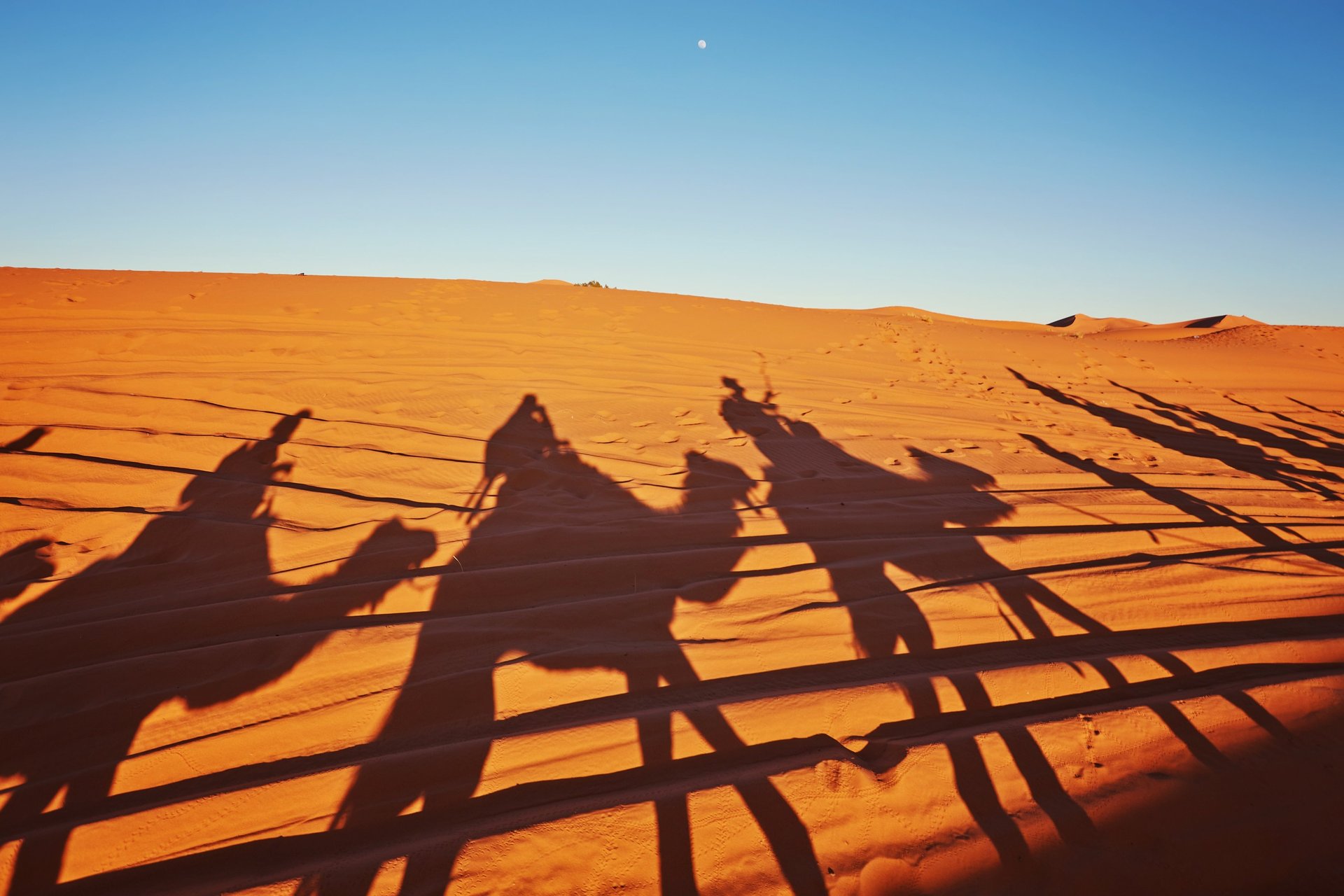
Get in touch
Please use the form below to email us, and we’ll respond as quickly as possible. If you don’t hear from us within 24 hours, feel free to send a WhatsApp message or call us at +212625473756. We look forward to connecting with you!
Address
N 45, Hay El Qods Rue 06, Rissani 52450. Morocco
Contact Us
Our Services
Tangier Tours
Agadir Tours
Hot Air Balloon
Sandboarding
Camel Trekking
Merzouga Horse Riding
Quad Biking
4x4 Desert Safaris
Photography Tours
Desert Camping


